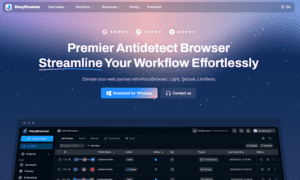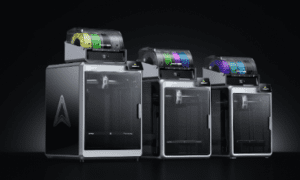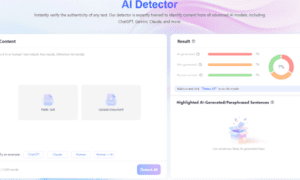I’ve spent years researching cybercrime, and one thing that always strikes me is how these criminal operations mirror legitimate businesses in almost every way. They compete for customers, develop brand loyalty, and even poach talent from each other. When Briansclub was at its peak, it wasn’t operating in isolation – it was part of a whole ecosystem of underground marketplaces, each trying to corner their piece of the stolen data market.
The thing is, most people think of dark web criminals as hoodie-wearing hackers working alone in basements. The reality is way more organized and frankly, more disturbing than that.
The Heavy Hitters
Let me walk you through the major players I’ve tracked over the years. Briansclub was like the Amazon of stolen credit cards – huge selection, reliable service, but nothing fancy. They didn’t waste time on flashy graphics or marketing gimmicks. You logged in, found what you needed, bought it, and left. It worked because people knew they’d get exactly what they paid for.
Joker’s Stash was the complete opposite. These guys had style. Colorful website design, holiday themes, customer support that actually responded to questions. They charged more than Briansclub, but buyers got extra information with their purchases – billing addresses, phone numbers, sometimes even social security numbers. It was like shopping at a boutique instead of a warehouse store.
Then you had UniCC, which showed up after some of the bigger names got shut down. They focused on automation and bulk sales, basically targeting the criminal equivalent of enterprise customers. If you were running a large-scale fraud operation, UniCC had the tools to integrate stolen data directly into your systems.
Yale Lodge was different again – they specialized in what’s called “fullz,” which is basically someone’s complete identity package. Not just credit card numbers, but everything needed to steal someone’s entire financial life. Scary stuff.
Different Approaches, Same Dirty Business
What fascinated me about studying these platforms was how they each found their niche. Briansclub went for volume – they’d have millions of stolen cards available at any time, with bulk discounts for big buyers. Their website looked like it was built in 2003, but it didn’t matter because it worked efficiently.
I remember analyzing Joker’s Stash’s approach and being amazed at their customer service focus. They had live chat support to help criminals use stolen data more effectively. Think about that for a second – customer service for credit card fraud. They understood that happy customers come back and refer others.
UniCC took the enterprise approach. They built APIs so criminal organizations could automate their fraud operations. Instead of manually buying cards one by one, groups could set up systems to automatically purchase and test stolen data at scale.
Yale Lodge went deep instead of wide. Rather than competing on volume, they focused on high-value identity packages that could be used for serious long-term fraud like opening loans or new accounts.
The Money Behind the Madness
The financial numbers from these operations are staggering. Briansclub alone moved over $100 million in stolen data during its run. That’s not revenue – that’s just the face value of the cards they sold. When you factor in what criminals actually stole using that data, we’re talking about billions in losses.
Pricing was interesting to track. Fresh stolen data – cards that had just been compromised – sold for premium prices. A newly stolen credit card number might go for $15-20, while one that had been floating around for weeks might only fetch $3-5. It was like a twisted stock market where freshness determined value.
The platforms had to constantly acquire new data to stay competitive. This drove a whole secondary market of people running skimming operations, hacking point-of-sale systems, and conducting phishing attacks just to feed data to these marketplaces.
Customer Reviews for Criminal Activity
Here’s something that still blows my mind – these platforms had sophisticated review systems. Buyers would rate the quality of stolen cards they purchased. Cards that worked got good reviews, dead cards got flagged. Over time, this created quality metrics that helped maintain each platform’s reputation.
Joker’s Stash even offered guarantees on their stolen cards. If you bought data that didn’t work, they’d replace it. Customer satisfaction in the credit card fraud business – I still can’t wrap my head around it.
The platforms also shared intelligence about which banks had better fraud detection, which types of cards worked best for specific types of fraud, and which geographic regions were easier targets. It was like having a criminal trade association.
When Criminals Get Hacked
The irony of the 2019 Briansclub breach still makes me chuckle. Here’s a platform that made millions selling other people’s stolen data, and they got their own data stolen. Over 26 million credit card records got leaked to banks and researchers, allowing tons of compromised cards to be canceled before they could be used fraudulently.
But here’s what really caught my attention – even after getting breached, other platforms learned from Briansclub’s mistakes and improved their own security. These criminal operations were studying each other’s failures and adapting. That level of organizational learning is something many legitimate businesses struggle with.
The Real Impact
While I find the business aspects of these platforms academically interesting, I never forget what they actually represent. Every transaction on these sites meant someone’s financial life got turned upside down. The stolen data came from regular people – teachers, retirees, students – who just wanted to buy something online or use an ATM.
I’ve talked to fraud victims, and the damage goes way beyond the immediate financial loss. People spend months or years cleaning up their credit, dealing with banks, and living with the anxiety that it might happen again.
What We’re Up Against
Studying these platforms taught me that we’re not dealing with disorganized criminals anymore. These are sophisticated operations with customer service departments, quality control systems, and competitive business strategies. They adapt quickly to law enforcement pressure and learn from each other’s successes and failures.
For regular people, this means basic security measures aren’t enough anymore. You need to monitor your accounts constantly, use alerts for every transaction, and assume that any place you use your card could potentially be compromised.
The underground economy for stolen data isn’t going anywhere. New platforms replace old ones, often with better security and more sophisticated features. But understanding how they operate and compete gives us insights into protecting ourselves in this new reality where your financial information is actively hunted and sold like any other commodity.



































